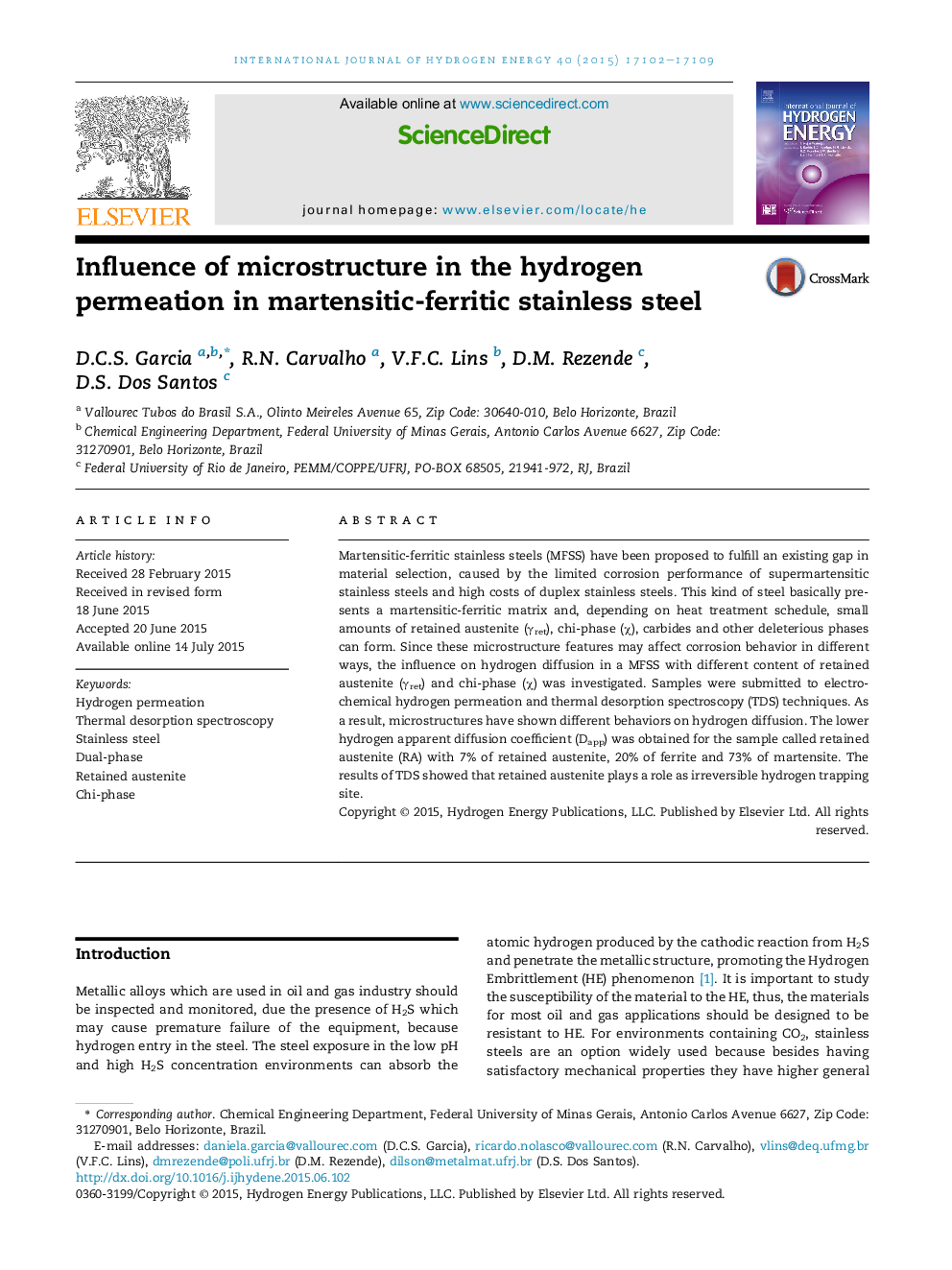| Article ID | Journal | Published Year | Pages | File Type |
|---|---|---|---|---|
| 1278409 | International Journal of Hydrogen Energy | 2015 | 8 Pages |
•Microstructure showed different behaviors on hydrogen diffusion.•Hydrogen diffusion coefficient is lower in specimen with retained austenite, than in specimen without it.•Retained austenite plays a role as irreversible hydrogen trapping site.•Chi-phase traps hydrogen irreversibly.
Martensitic-ferritic stainless steels (MFSS) have been proposed to fulfill an existing gap in material selection, caused by the limited corrosion performance of supermartensitic stainless steels and high costs of duplex stainless steels. This kind of steel basically presents a martensitic-ferritic matrix and, depending on heat treatment schedule, small amounts of retained austenite (γret), chi-phase (χ), carbides and other deleterious phases can form. Since these microstructure features may affect corrosion behavior in different ways, the influence on hydrogen diffusion in a MFSS with different content of retained austenite (γret) and chi-phase (χ) was investigated. Samples were submitted to electrochemical hydrogen permeation and thermal desorption spectroscopy (TDS) techniques. As a result, microstructures have shown different behaviors on hydrogen diffusion. The lower hydrogen apparent diffusion coefficient (Dapp) was obtained for the sample called retained austenite (RA) with 7% of retained austenite, 20% of ferrite and 73% of martensite. The results of TDS showed that retained austenite plays a role as irreversible hydrogen trapping site.
